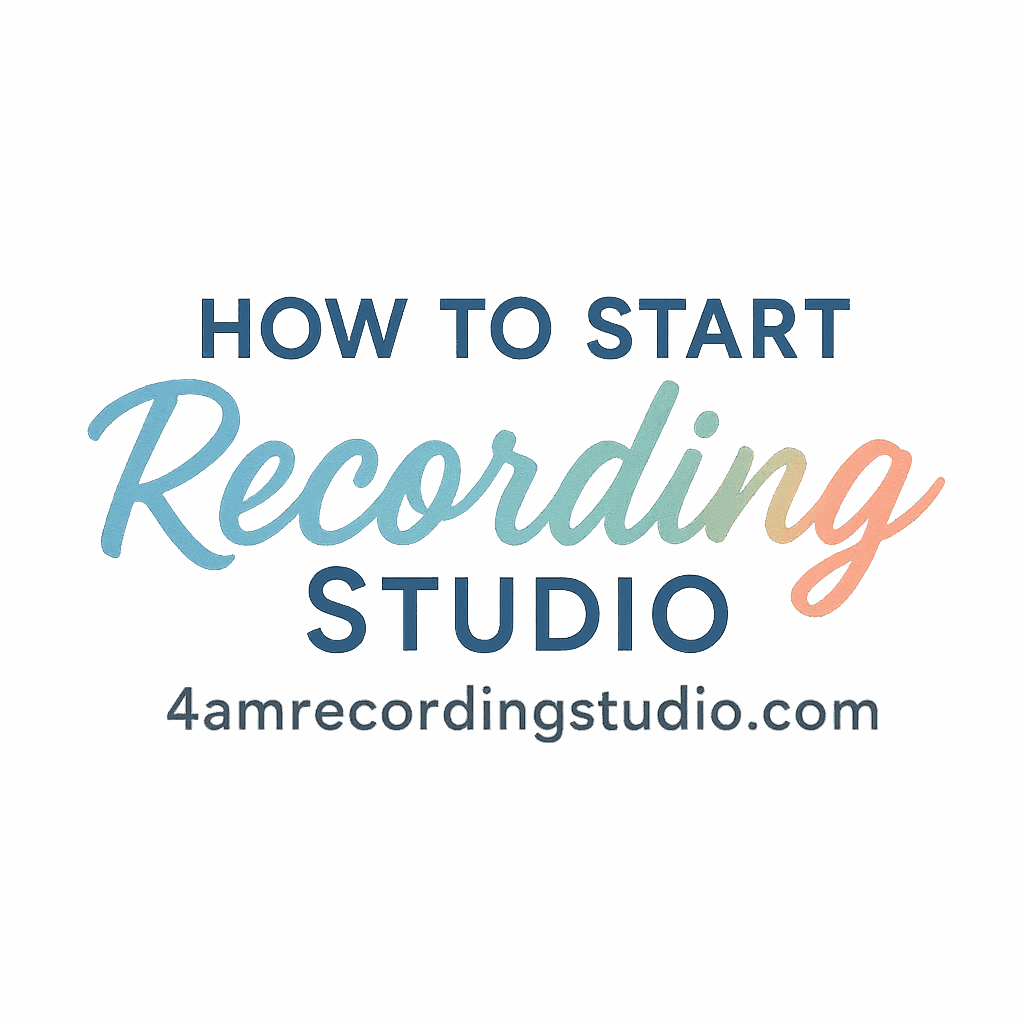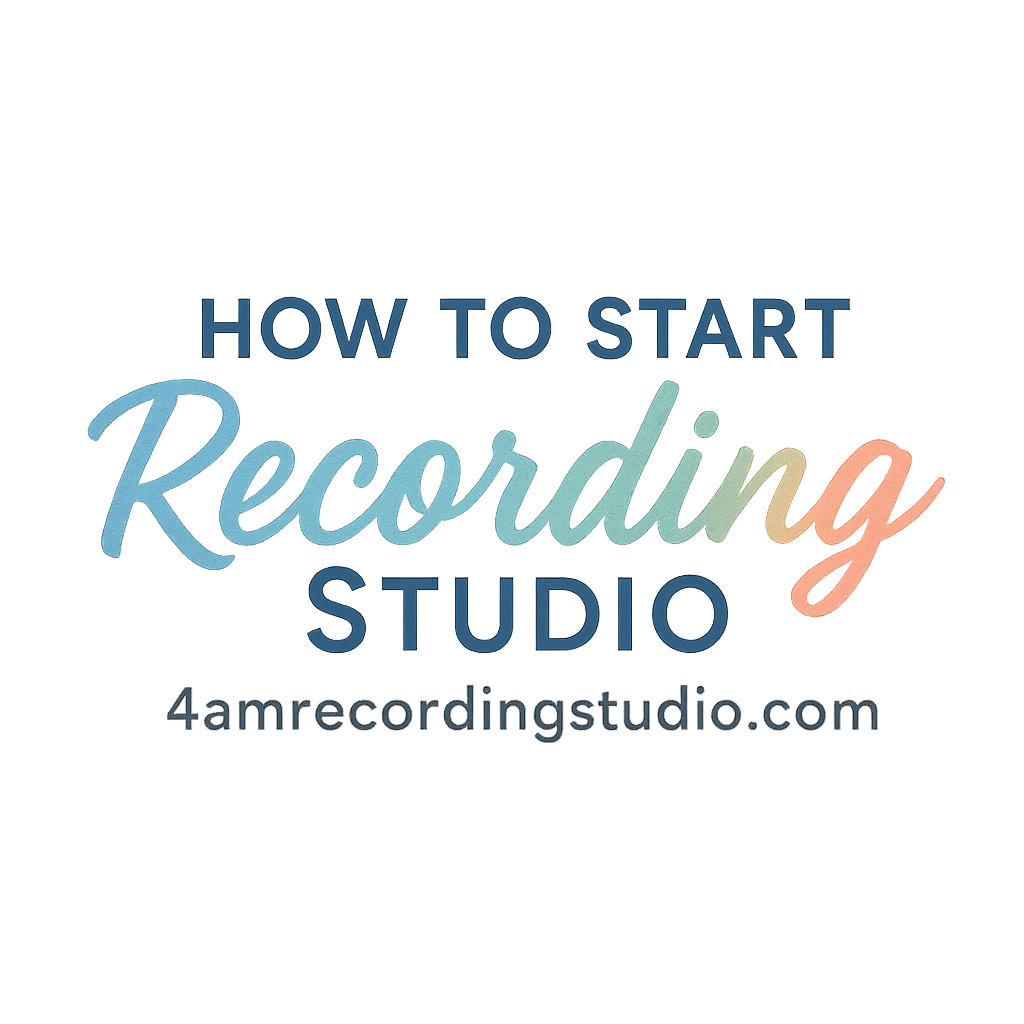Introduction
Feeling overwhelmed in your studio with too many things to juggle? You’re not alone. Many studio owners and producers struggle with bottlenecks that slow down creativity and production. Whether you’re running a home studio or managing a full-blown professional setup, your tools can either be your best friend—or your biggest headache.
Luckily, with the right gear and software, you can create a smoother, faster, and more efficient workflow. In this article, we’re diving into 5 powerful tools to streamline your recording studio workflow, boost productivity, and keep your creative energy flowing.
Let’s break down the tech and tactics that can take your studio from chaos to streamlined genius.
1. Digital Audio Workstation (DAW)
Why Your DAW Matters
Think of your DAW as the brain of your recording studio. Everything flows through it—recording, editing, mixing, mastering, and even collaborating. Choosing the right DAW isn’t just about cool features; it’s about finding one that aligns with your creative style and speeds up your daily processes.
Top DAWs That Improve Studio Workflow
– Pro Tools
Known as the industry standard, Pro Tools is perfect for large sessions, advanced editing, and high-quality mixing. It also integrates well with other studio hardware.
– Logic Pro X
Apple’s Logic Pro X is ideal for producers and musicians. Its intuitive interface, built-in plugins, and workflow enhancements like track stacks and smart controls make it a go-to for streamlined work.
– Ableton Live
If you’re into beat-making, live performances, or looping, Ableton Live offers unmatched speed and flexibility. Its session view is a workflow booster, especially for electronic and experimental genres.
👉 Want more setup insights? Check out Recording Studio Setup Basics for an in-depth guide.
2. Audio Interface
The Role of a Quality Interface
Your audio interface is the gateway between your instruments/microphones and your computer. A reliable interface reduces latency, ensures clean audio conversion, and gives you the flexibility to connect everything you need without constant rewiring.
Features That Speed Up the Process
– Fast Connectivity
Modern interfaces with USB-C or Thunderbolt connections drastically cut down load and transfer times.
– Low Latency
Low latency = smoother recording sessions. Look for interfaces that maintain quality without introducing lag.
– Multiple I/O Options
The more ins and outs, the better. You’ll spend less time unplugging gear and more time actually recording.
👉 Dive deeper into gear selection with our full guide on Recording Studio Equipment & Tools.
3. MIDI Controller
Why MIDI Tools Are a Game-Changer
A MIDI controller is more than just keys and pads—it’s your hands-on shortcut to composing faster. It helps you trigger samples, tweak parameters, and map out full tracks without even touching your mouse.
Recommended MIDI Controllers for Efficiency
– Native Instruments Komplete Kontrol
This beast integrates perfectly with NI’s plugins, giving you complete control over sounds, effects, and project navigation—all from your controller.
– Akai MPK Series
Compact, powerful, and affordable. The MPK series is great for producers who need performance pads and keys in a portable form.
👉 Explore more MIDI essentials in our MIDI tag library.
4. Studio Management Software
Organizing Sessions, Clients & Payments
Running a studio isn’t just about the music—you’ve also got to handle scheduling, billing, and client communication. Studio management software helps automate all that.
Best Management Tools for Studio Owners
– Studio Management Pro
Designed specifically for audio professionals, this software lets you manage bookings, generate invoices, and store session notes in one place.
– SoundBetter
Great for freelancers and studios alike, SoundBetter allows you to find clients, manage projects, and get paid—all through one platform.
👉 Want to master operations? Read more on Recording Studio Management & Growth.

5. Cloud Storage & Collaboration Platforms
Why Remote Collaboration is Essential Today
The modern studio is no longer confined to four walls. With artists, engineers, and clients collaborating remotely, cloud storage is a must. It ensures fast file sharing, real-time feedback, and secure backups.
Top Cloud Tools for Music Projects
– Google Drive
Simple, secure, and free (up to 15GB). Great for quick exchanges and storing session files.
– Splice
Tailor-made for producers, Splice allows project sharing, plugin syncing, and even sample browsing—all in the cloud.
👉 If you want to grow your studio business, don’t miss our articles on Marketing & Branding and Studio Business Planning.
Tips to Maximize Tool Efficiency
Integrate Tools for Seamless Workflow
Make sure your DAW, controller, and interface all communicate flawlessly. Most pro setups rely on custom templates, plugin chains, and hotkeys to speed things up.
Keep Your Setup Organized
Messy cables, poorly labeled files, and inconsistent folder systems can kill your vibe. Use labeled templates, cable management kits, and session checklists to stay on point.
👉 Learn how to organize your studio like a pro with our Tag: Organize.
Internal Links That Help You Level Up
To further enhance your studio operations, explore these key areas:
- Recording Studio Setup Basics — Start with the foundation.
- Recording Studio Marketing & Branding — Promote smarter.
- Recording Studio Equipment & Tools — Gear up.
- Recording Studio Management & Growth — Scale your success.
- Recording Studio Business Planning — Plan wisely.
Also check out helpful tags: beginner, clients, email, growth, setup, streams, and more!
Conclusion
Streamlining your studio workflow doesn’t require reinventing the wheel. With the right tools—a reliable DAW, efficient interface, versatile MIDI controller, smart management software, and robust cloud collaboration platforms—you can turn your recording studio into a well-oiled music machine.
Focus on tools that enhance your speed, organization, and collaboration. Remember, efficiency isn’t about working harder; it’s about working smarter—and your studio deserves nothing less.
FAQs
1. What is the most important tool for improving studio workflow?
Your DAW is arguably the most crucial, as it handles recording, editing, and mixing in one space.
2. Can I streamline my studio workflow on a budget?
Yes! Many tools like Audacity, Reaper, and Google Drive are either free or very affordable.
3. Is cloud storage really necessary for a small home studio?
Absolutely. Even small studios benefit from cloud backups and remote collaboration.
4. What’s the best way to organize project files?
Use a consistent folder structure, label everything clearly, and back up files regularly—preferably in the cloud.
5. How do I choose the best audio interface for my needs?
Look for one with the right number of inputs/outputs, low latency, and compatibility with your DAW.
6. How can I promote my studio more effectively?
Use tools covered in our marketing and branding section and build a strong online presence.
7. Where can I learn more about setting up a studio?
Explore our setup basics guide for everything you need to start strong.


